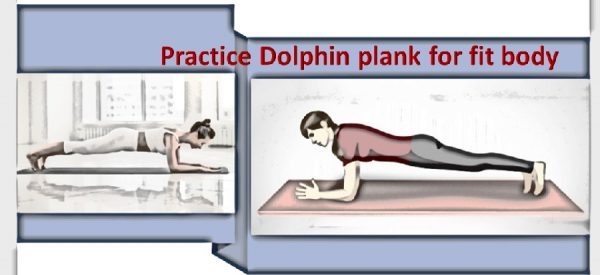
Practice dolphin plank to achieve fit body
Dolphin plank for strong arms and strong legs -Also known as Makara Adho Mukha Svanasana in sanskrit, Dolphin plank pose is intermediate pose. It is one of the popular poses that yogis’ practice to get strong set of arms. It is a modification of regular plank of Sun salutation and helps in focus on bringing strength together.
Dolphin plank is about strength, energy and effervescence. Practicing dolphin pose few times a week not only gives fit body also a flat tummy. It also stretches hamstrings, calves, feet arch, shoulder muscles. It is good pose for those who look forward to challenging their brain, to release stress and for those who are trying to come out from depression and anxiety.
How to perform dolphin plank pose?
- Start with downward dog pose. Inhale and exhale and slowly get into regular plank on hands and knees.
- Move to the elbows on the floor by placing elbows directly under your shoulder. The distance between the two elbows should be at your forearm length.
- Forearms can extend straight in front of you on the floor with palms flat or you can clasp the fingers. Make sure your chest is open and shoulders are back and down.
- Pull abdominal muscles tight to support your body as you get into plank pose. Keep legs together. Your entire body now is participating in the pose.
- While focusing front, remember not to sag in the middle or do not let the hip/butt go high. Entire body should be in straight line. Your core should be working at this point. Check your alignment in the mirror.
- Hold the pose for five breaths. Release the pose after 5 breaths and repeat 3 times to get the benefits of the pose.
- After dolphin plank – you can get back to downward dog pose or child pose to release any tension in the back.
If you are a beginner for yoga, you must also be aware that in all types of plank poses try to relieve any neck tension either by going on knees or you can rest forehead on a block between forearms. The pose can cause shoulder, neck, or spinal injuries and not recommended for those who have high blood pressure, eye or ear infections.
Image credit: www.werindia.com
Author: Sumana Rao | Posted on: March 17, 2020
« Greet with Namaste to keep germs away Forest bathing Shinrin yoku »




















Write a comment